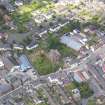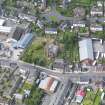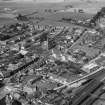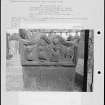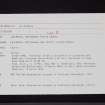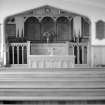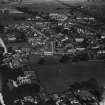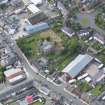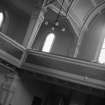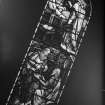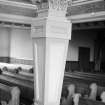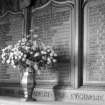Lockerbie, Dryfesdale Parish Church
Burial Ground (18th Century), Church (19th Century), War Memorial(S) (19th Century) - (20th Century)
Site Name Lockerbie, Dryfesdale Parish Church
Classification Burial Ground (18th Century), Church (19th Century), War Memorial(S) (19th Century) - (20th Century)
Alternative Name(s) Lockerbie, High Street; Dryfesdale And Trinity Parish Church; War Memorial Plaques, Book Of Rememberance
Canmore ID 66884
Site Number NY18SW 73
NGR NY 13561 81855
Datum OSGB36 - NGR
Permalink http://canmore.org.uk/site/66884
- Council Dumfries And Galloway
- Parish Dryfesdale
- Former Region Dumfries And Galloway
- Former District Annandale And Eskdale
- Former County Dumfries-shire
NY18SW 73 13561 81855
For Dryfesdale Parish Church Hall, see NY18SW 183.
For predecessor churches at Sandbed (NY c. 12 84) and Dryfe, Old Parish Church (NY 1289 8383), see NY18SW 110 and NY18SW 18 respectively.
Dated 1898. Architect Frank C Carruthers of Lockerbie and Dumfries. Previous church built 1757 as a successor to that described on NY18SW 18.
OSA 1793; NSA 1845; Annandale Herald and Moffat News, 12 March 1896; 16 July 1896; Annandale Observer, 13 March 1896.
The church of Dryfesdale was dedicated to St Cuthbert. In 1116 it belonged to the See of Glasgow. The old church at the Kirkhill was carried away by a flood of the river Dryfe. A new church, built in 1671, was swept off also, with a great part of the churchyard. The church was then built in Lockerbie, and has since been rebuilt there.
H Scott 1915-61.
This church (dated 1898) occupies an elevated position within its burial-ground, and probably stands on much the same site as its post-Reformation predecessor.
Within the burial-ground there are many 18th-century gravestones (most of them exceptionall plain), the earliest observed being dated 1710. The most notable stone commemorates the wife and daughter of William Chrichton in Bangill, who died respectively 3 September 1746, aged 36 years, and 25 July 1746, aged 14; a woman and girl, with hands linked, figure in relief on the tympanum and a re flanked by a crown and hour glass.
Visited by RCAHMS (IMS, PC), 30 September 1993.
Architect, F J C Carruthers, 1896-98.



















